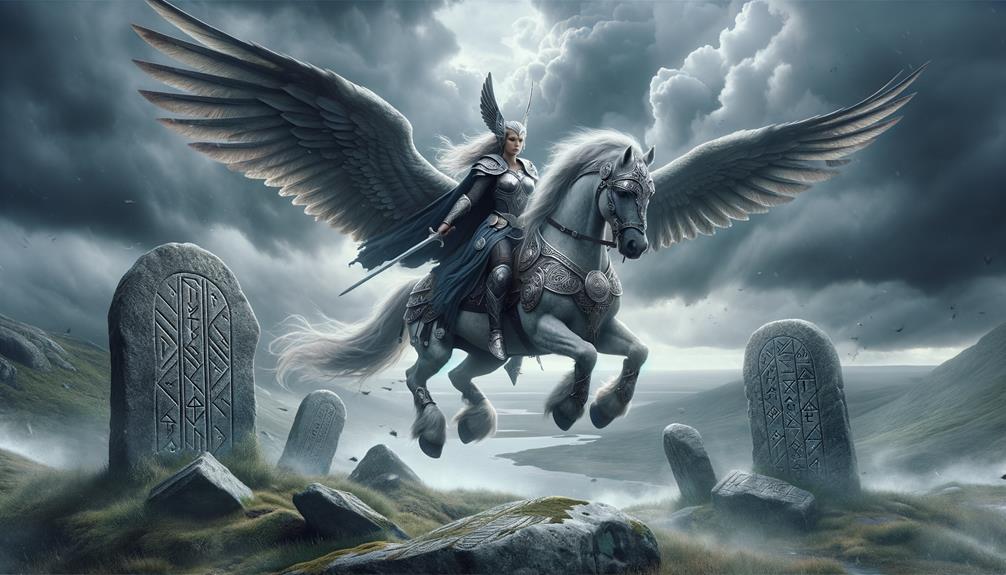In my time looking into Norse mythology, I've come to find Valkyries quite fascinating. Valkyries are legendary female figures who choose who lives and who dies in battle. On one hand, they're often depicted as gorgeous, blonde-haired women, but on the other hand, they're primarily serving Odin, the god of death and war. This mixture of attractiveness and harshness, fear and fascination, weaves an intricate and captivating story. Studying Valkyries gives us an insight into the faith and morals of the Norse people, as well as a tool to delve into why humans are so intrigued by the divine, supernatural, and life after death. There's a lot to unravel about these warrior women, their roles, their impact, and how they're depicted in different Norse sagas, which we'll look into in our discussion ahead.
Valkyrie Origins and Evolution

Let's talk about the origins and evolution of Valkyries, the powerful figures that held a crucial role in Norse mythology. They were more than just harbingers of war, they also acted as selective protectors of the afterlife. The term Valkyrie, in Old Norse, translates to "chooser of the slain", emphasizing their position as divine shieldmaidens for Odin, as described in the prose Edda and Poetic sagas.
The role of Valkyries is fundamentally woven into the fabric of Norse cosmology. Odin, the chief deity of Norse pantheon, would send them to the mortal world's battlefields. Why, you ask? Their task was to identify the most courageous fallen warriors who deserved a spot in Valhalla, Odin's hall in the afterlife. This role of selection is deeply rooted in Valkyrie origins and evolution, marking them as judges of heroic merit and death.
However, these supernatural beings were more than just choosers. They were also heralds of war, unavoidably associated with bloodshed. Picture them riding into battle on horses, their helmets shining, their shields at the ready – a sign of the deadly battle to come. Therefore, Valkyries were not merely selectors, they were active players in Norse warfare, embodying the bravery and violence that typifies Norse mythology.
Role of Valkyries in Afterlife
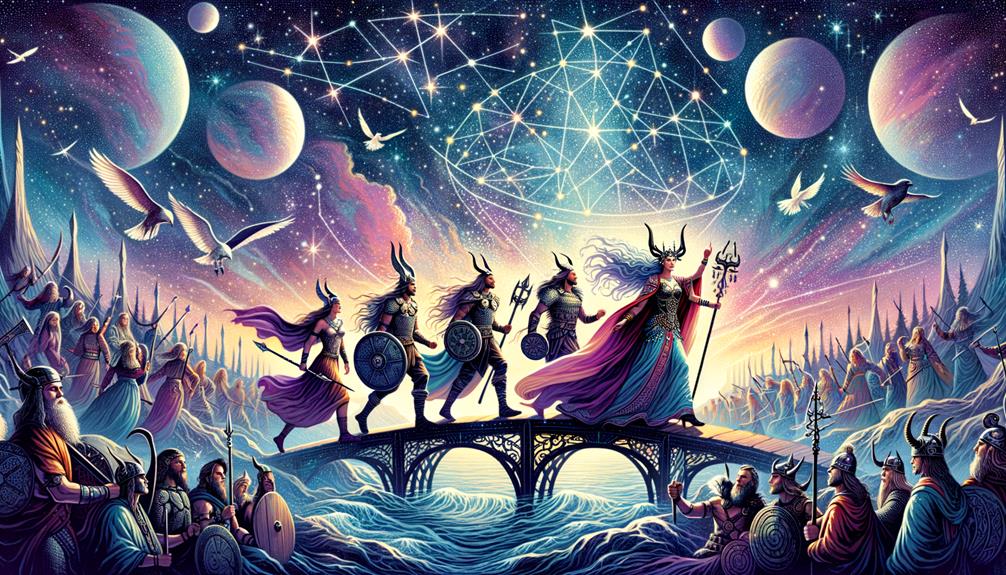
Let's chat about Valkyries and their part in the afterlife. You see, they have two jobs. The first is picking out the warriors who have fallen in battle for a place in Valhalla. The second is to act as their guides and guardians in this Norse heaven. Valkyries are a group of 94 strong female figures in Norse mythology. They work for the god Odin and are tasked with the tough job of deciding the fate of battles, including who will die and who will live.
Most importantly, they pick out the fallen and lead them to Valhalla, a grand hall for heroes. Here, they continue to look after the fallen warriors. The Valkyries make sure their journey from life to the afterlife is smooth and dignified.
Let's break down the responsibilities of Valkyries:
- Picking out the fallen: The Valkyries are tasked with selecting the bravest of the fallen warriors from the battlefield and leading them to Valhalla.
- Working in Valhalla: Once in Valhalla, the Valkyries continue to look after the chosen warriors. They serve them mead and prepare them for the final battle, Ragnarok.
The Valkyries play a crucial role in the cycle of life, death, and rebirth in the Norse universe. Their role reflects how the Norse culture views death and the afterlife.
Notable Valkyries in Mythology
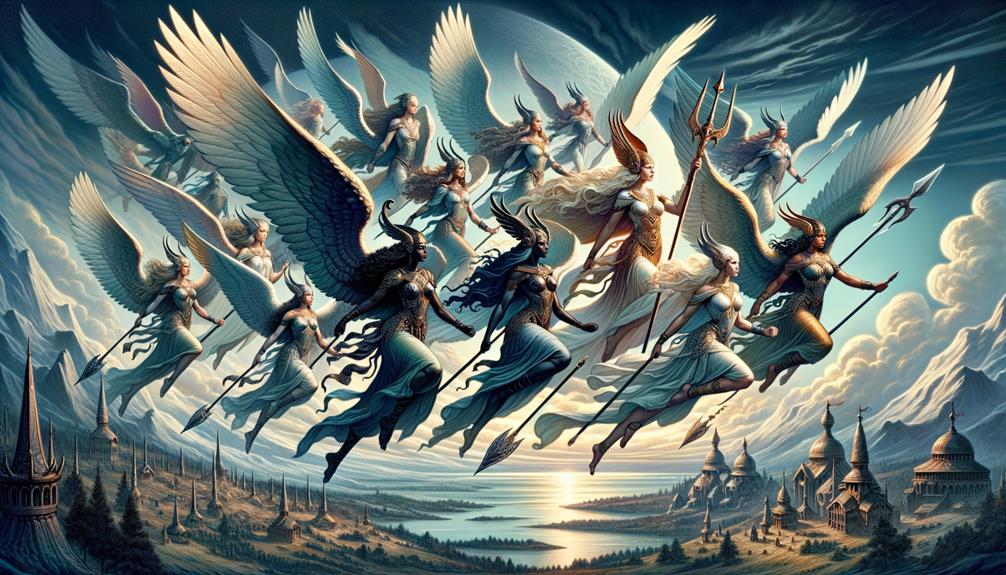
Let's chat about Valkyries, those iconic figures from Norse mythology. A couple of them, Brynhild and Sigrún, are worth a special mention. They give us a fascinating peek into how the Norse viewed these warrior women.
Brynhild, known for selecting those who would die in battle, features heavily in several Norse sagas. Her life is inextricably linked with Siegfried, a hero who pledged to marry her but met his end in combat instead. Brynhild's story is a poignant reminder of the often tragic destiny of heroes in Norse myth. It highlights how a Valkyrie can guide a hero, yet also bring about their downfall.
Now let's talk about Sigrún. She embodies the protective side of a Valkyrie. She's so dedicated to her chosen hero, Helgi, that she even disobeys Odin's orders in Valhalla to keep him safe. Both she and Brynhild reflect the goddess Freyja's influence, showing us that Valkyries weren't just about war – they were agents of love, too.
Whenever Valkyries crop up in a tale, they add a whole new dimension to the story. They reflect the nuanced way the Norse thought about death, destiny, and heroism.
Valkyries: Symbolism and Interpretation
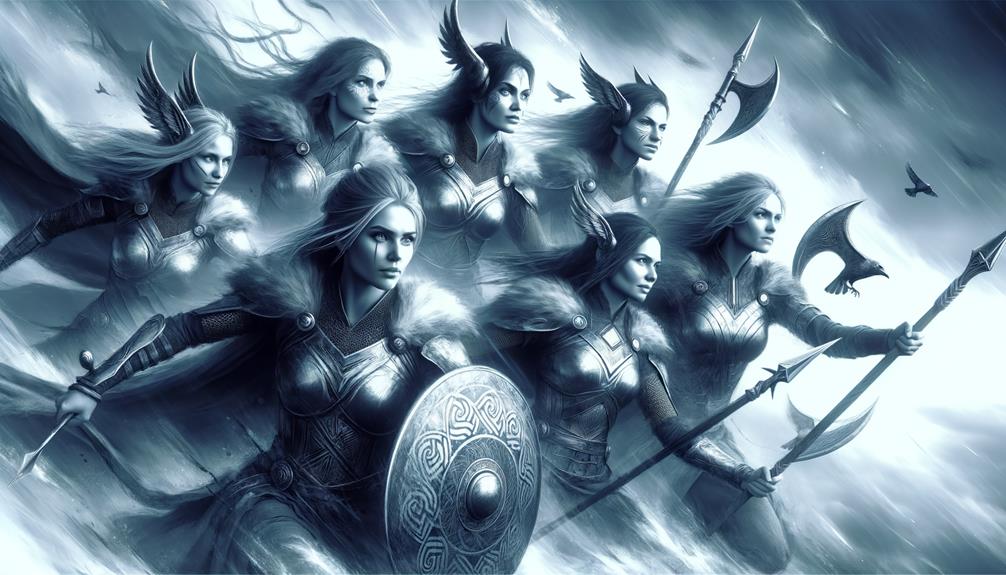
Let's have a chat about the fascinating symbolism and diverse understanding of Valkyries. These powerful figures from Norse mythology are not only seen as battlefield overseers, but they also stand as strong symbols of female strength and military skill. The name 'Valkyrie' translates to 'chooser of the slain', which is their role as Odin dispatches them to the front lines of war.
- According to Snorri Sturluson's Edda and Poetic Edda, Valkyries carry two primary symbolic roles:
- They stand for the idea of a warrior's death in battle. Valkyries pick brave warriors, lead their spirits to Valhalla, and predict either doom or victory.
- They personify the divine feminine in Norse mythology. They protect the lives and vessels of those they favour, demonstrating their nurturing side.
The Norse stories describe them as beautiful, radiant, and associated with gold, which further validates their divine status. Their power to fly, cause the demise of warriors they don't favour, and their role as choosers of the slain emphasises the complex symbolism tied to these figures. Therefore, Valkyries serve as powerful symbols of the intricate relationship between life, death, and divinity in Norse cosmology.
Valkyries' Impact on Modern Culture
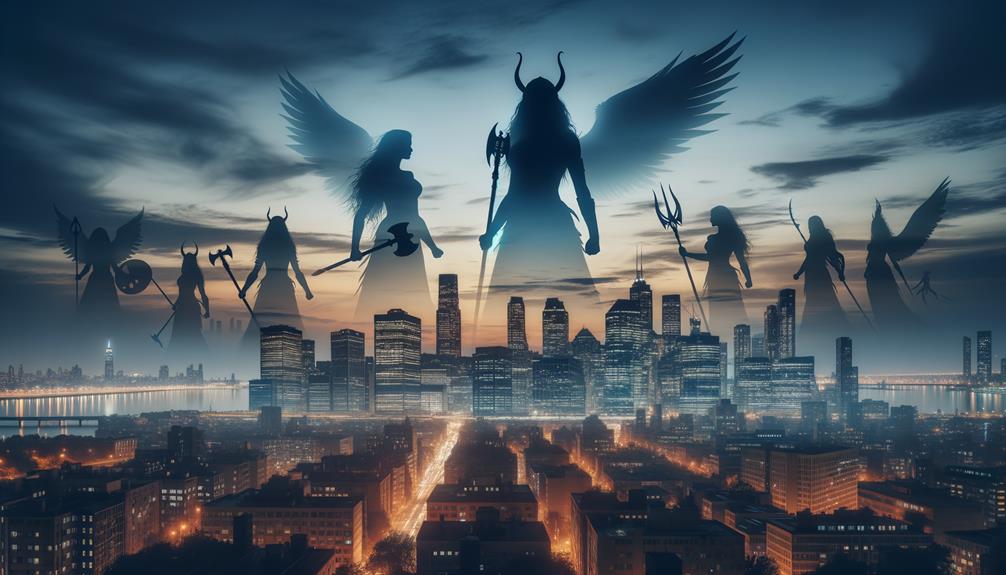
The influence of Valkyries, originating from Norse mythology, on today's culture is an interesting topic to dig into. Our culture is steeped in references to these powerful figures. From ancient Norse texts to today's Marvel Comics, it's clear that Valkyries have left a deep mark on modern society.
Take a look at TV and film. You'll find Lagertha, the formidable shieldmaiden from the hit TV show 'Vikings,' or Hela, the goddess of death in Marvel's Thor. And don't forget Richard Wagner's 'Ring' cycle which offers a rich representation of the Valkyries, proving their wide-reaching cultural relevance.
But it's not only in visual media where we see their influence. Literature also draws from their symbol of strength and courage. Characters like Queen Maeve in 'The Boys' and the hero Sigurd's Valkyrie lover in Norse sagas are perfect examples.
The Valkyries aren't just known as death bringers or divine messengers either. Their links to rebirth, honor, and fertility are enduring themes that continue to engage audiences. This shows how even ancient mythology remains relevant in our current times. The impact of the Valkyries on today's culture is not only significant, but it also sheds light on the timeless appeal of ancient mythology.
Frequently Asked Questions
What Is the Story of Valkyrie Mythology?
Who can resist a compelling story? The one about Valkyrie is truly intriguing. Within the realm of Norse mythology, these celestial female warriors play a critical role. Their duty? They determine who lives and who falls in combat. But their responsibilities don't end there – they also accompany the deceased to Valhalla, the grand hall of Odin.
What Do Valkyries Symbolize?
In Norse mythology, the Valkyries are fascinating figures. They represent a connection between life and death, and stand for values such as honor, bravery, and fairness. They are not just fierce warriors who serve Odin, but also symbols of female strength and leadership. In addition, their supernatural abilities add a layer of mysticism to the Norse cosmos. This further emphasizes the magical and mystical aspects of the Norse world.
Were Valkyries Allowed to Marry?
You might be wondering, "Could Valkyries tie the knot?" Well, as per Norse mythology, marriage wasn't on the cards for these Valkyries. They were deeply committed to their divine responsibilities to Odin and the warriors who had fallen in battle. This commitment was so intense that it didn't leave room for personal ties such as matrimony. They were a symbol of untamed independence and dedication.
Why Is Valkyrie so Important?
So, why exactly does Valkyrie carry so much weight? Well, in the world of Norse mythology, Valkyries play a big role. Picture them as the ones who get to pick and lead the fallen warriors right to Valhalla's doors. Serving as Odin's right-hand women, they have a substantial say in the outcomes of battles. But it's not just about war and death. They also represent key elements of Norse culture like fairness, brightness, and even gold. Pretty cool, right?

